How to Grill a T Bone Steak
When faced with the conundrum of choosing a steak, things can get tense. Do I opt for the richness of a rib eye, or do I savor the tenderness of a filet? What about the beefy satisfaction of a strip steak? Choices can be hard. But there is a way to get two out of three: the T-bone steak. A grilled T-bone is truly a fine choice for any steak dinner, and with proper thermal thinking and temperature monitoring, you can make a steak dinner at home that is not only cheaper but also better than the one you’ll get eating out.
Yes, better than the steakhouse. With thermal thinking and a fast and accurate thermometer, you can make a steak to your liking better than the folks who are grilling meat for the masses every night. This technique, suggested by Jess Pryles, gives you plenty of control and exceptional doneness. Let’s get into the meat of it now.
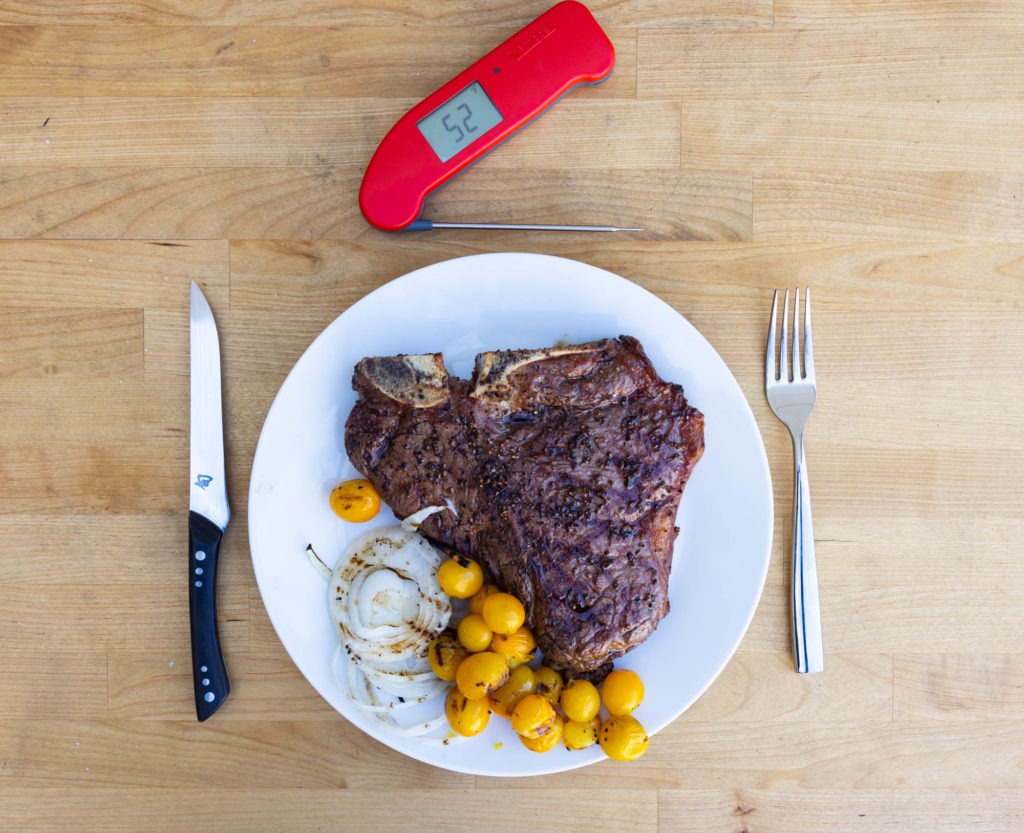
A great method for grilling steak
One can endlessly debate the choice to grill or pan-sear your steak. Both methods have advantages and give you delicious results, but let us here take it for a give that you want the delicious flavor of flame-kissed, char-grilled steak.
The difficulty of grilling steak is that the hot, delicious fire tends to scorch meat, leaving you with a barely pink center and an overcooked grey-band exterior. We have talked about ways to beat that by, for instance, reverse searing your steak. But if you are cooking on a Kamado-style cooker, for instance, cooking with the plate in then removing the plate and getting the heat up can be a bit of a bother.
In this method, which Jess Pryles call “Just Keep Flipping,” we put the steak over direct heat and flip it every 40 seconds. (Go ahead and use a timer with a repeatable-time feature like Timestick® to track those intervals…they’re much shorter than you think they will be!) That may seem excessive and might seem like the steak will never fully cook, but it really works remarkably well.
By flipping the steak regularly, we expose one side to the high heat just enough to load the surface with thermal energy, then turn it over. The heat-heavy side of the steak is now exposed to the air. Excess heat vents into the atmosphere, while the hot side gradually diffuses its heat into the rest of the meat. We are, in essence, cooking it rotisserie-style.
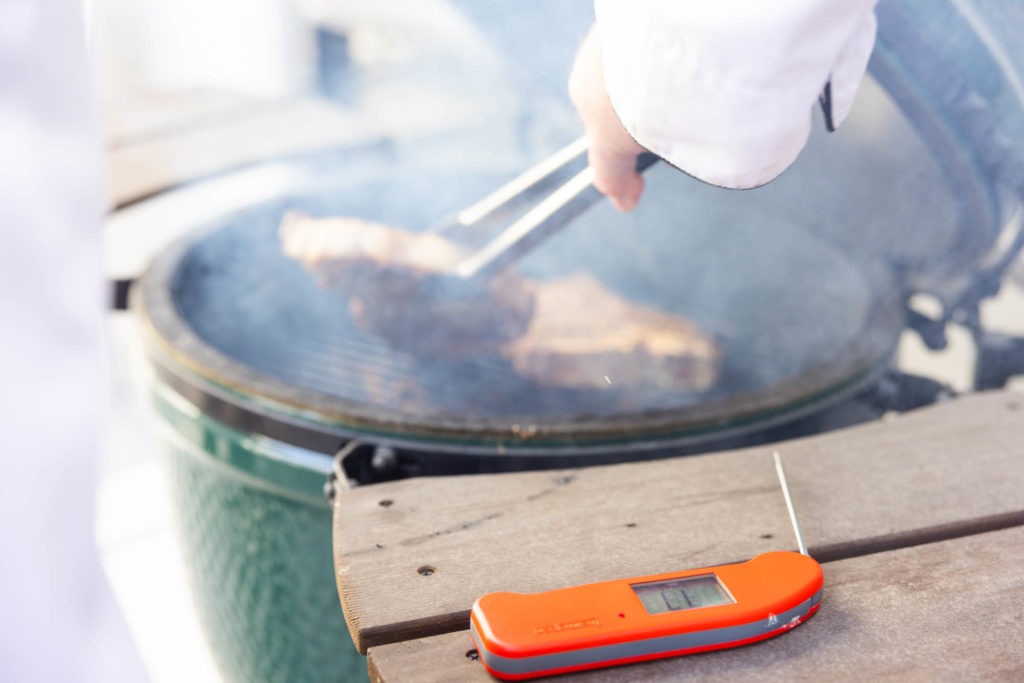
After about three flips, you start to see visible sizzling on the steak after each turn. By the time you’ve flipped it 10-ish times, you’ll be thinking that the crust looks good and this steak might be done. And that, friends, is the time to start taking the temperature.
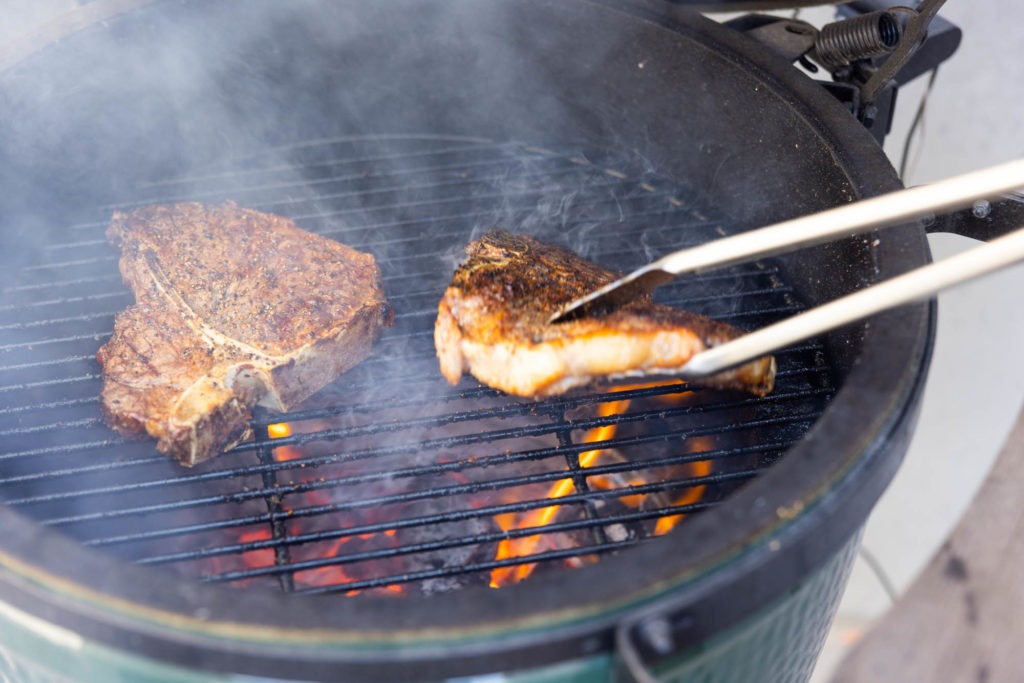
T bone steak doneness temperatures
To get your steak just right, and more to your liking than a cook at a restaurant who doesn’t know you or what you like, you need to temp it.
As with all steaks, medium-rare t-bone steak has a final temp of 130–134°F (55–57°C). Medium steak is ready at 135–144°F (58–62°C). But the high heat that we’ve been cooking over is definitely going to have some carryover cooking.
You are probably already a good cook, but this is where an instant-read thermometer like Thermapen® ONE can only make you better.
See, pulling the steak from heat before it’s done is key to the perfectly grilled steak. Trying the “thumb press” method for identifying doneness doesn’t help you know if your meat is 10°F (6°C) away from done, but a thermometer does! And pulling about 10°F (6°C) south of done is exactly what you want to do.
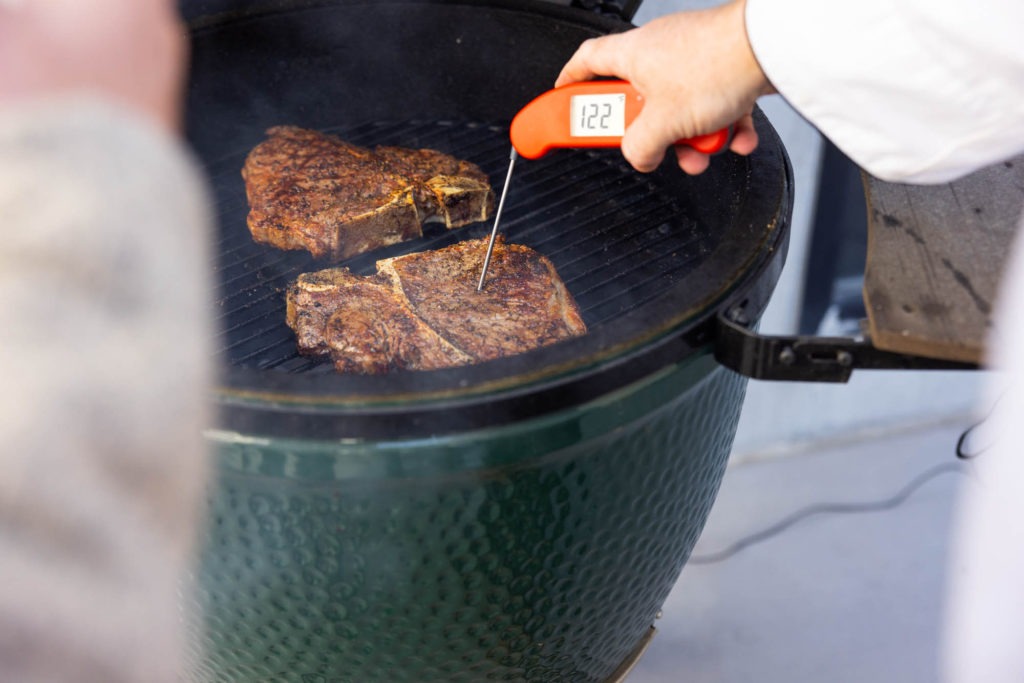
How long does it take to grill a T bone with this method?
As I said, these steaks are pretty much ready after about 10 or 12 flips. At 40 seconds per flip, that comes to about 7-ish minutes. (Results will differ based on initial temperature, grill heat, steak thickness, local air temp, etc. That’s why cooking to temp, not time, is so important.) Do you get gorgeous grill lines? No, but you do get a beautiful, even sear that deepens the flavor of the whole steak.
A t-bone, grilled to perfection, really is a delicious treat. You get a big, meaty strip and just a few precious bites of meltingly tender filet that you can eat to crown the whole experience. And with this thermally-sensitive cooking method, you get the full enjoyment out of your steak, no matter how you like it. Beautiful rosy red medium-rare or juicy-pink medium (or more done, if you like!) steak is yours for the taking if you cook it, flip it, cook it, flip it, and, most importantly, temp it.
Skip the steakhouse. Save some money on a better steak and enjoy it at the home table with people you care about. That is happy cooking.
Print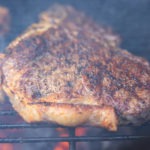
How to Grill a T Bone Steak
Description
Grilled t-bone steak, with method advice adapted from Jess Pryles.
Instructions
- Set up your grill for direct-heat cooking and preheat it.
- Salt the steaks generously with kosher salt and black pepper. (You can also use a steak-seasoning rub if you like.)
- When the grill is ready, place the steaks on the grate and set a TimeStick for 40 seconds.
- When the timer sounds, flip the steaks and restart the timer.
- Continue with this process, rotating the steaks as necessary to navigate hotspots on the grill.
- Probe the steaks occasionally with your Thermapen ONE to see how fast they are cooking. The speed may surprise you!
- When the steaks are 10°F (6°C) below your desired final temperature, pull them from heat. For us, that meant 123°F (51°C).
- Allow the steaks to rest for 3–5 minutes while you quickly grill some tasty veg to accompany them.
- Serve!
Shop now for products used in this post:


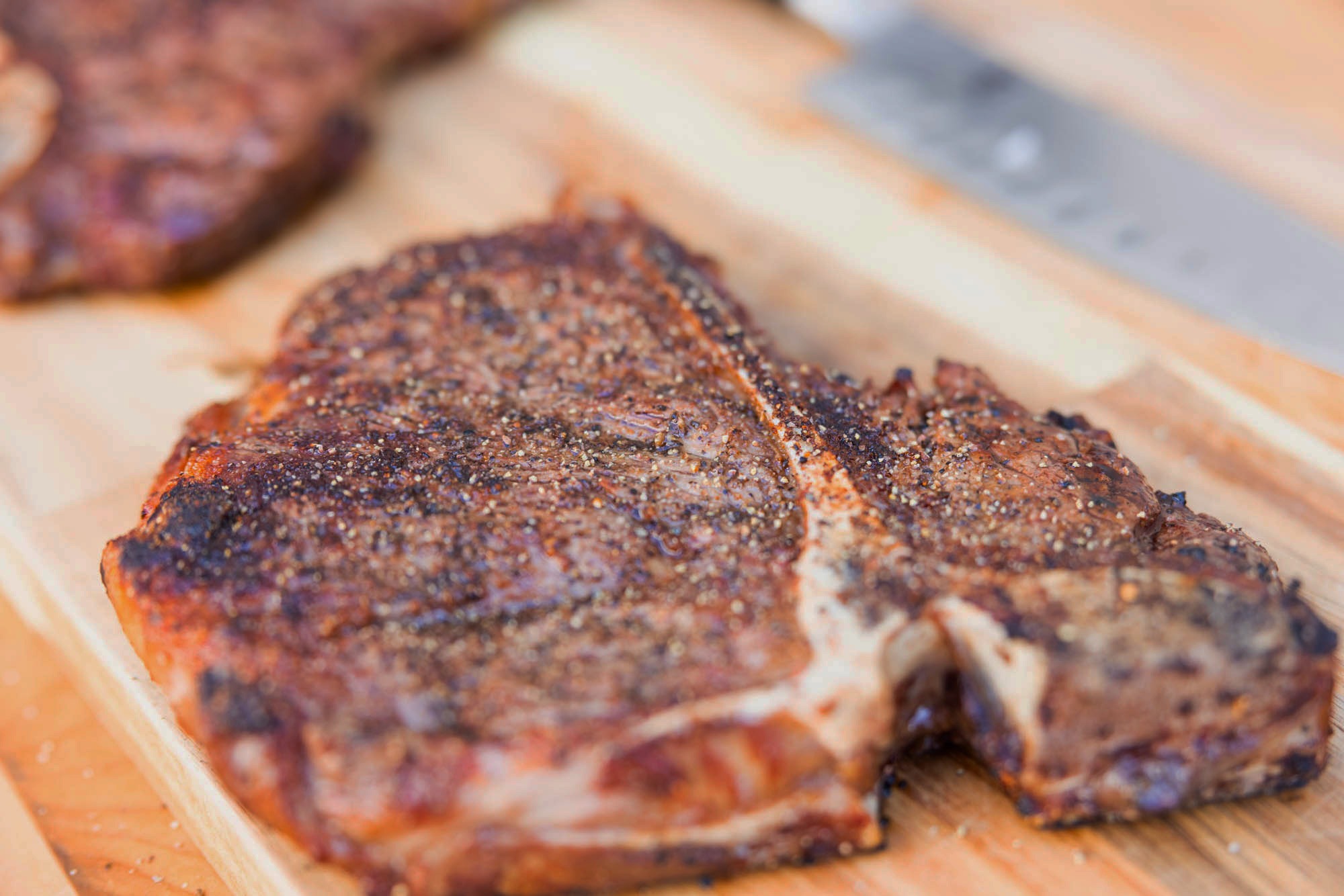
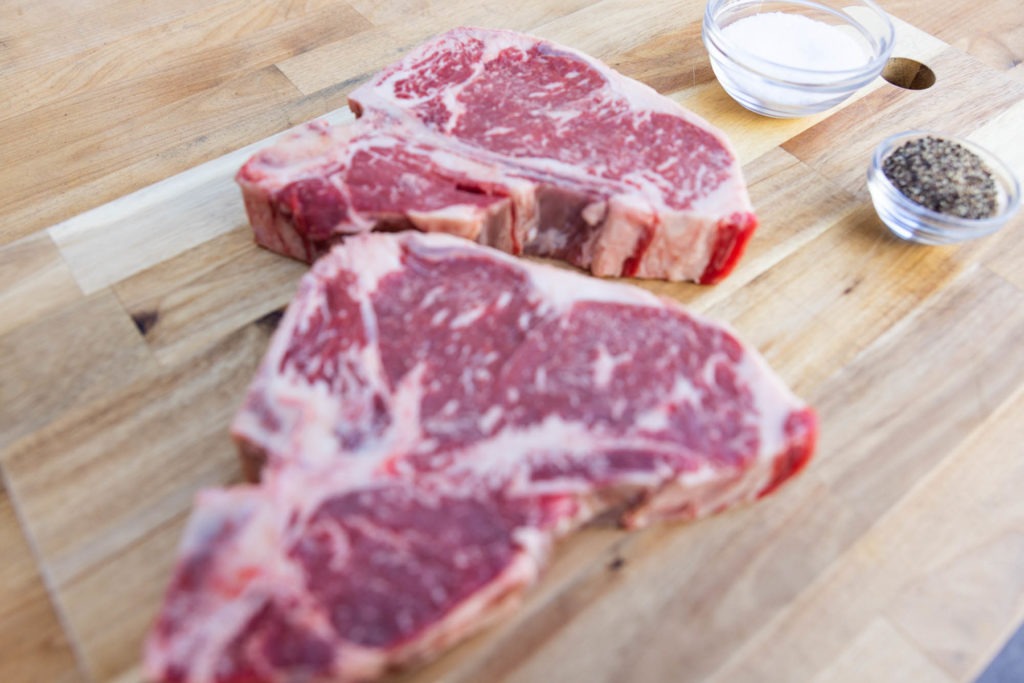
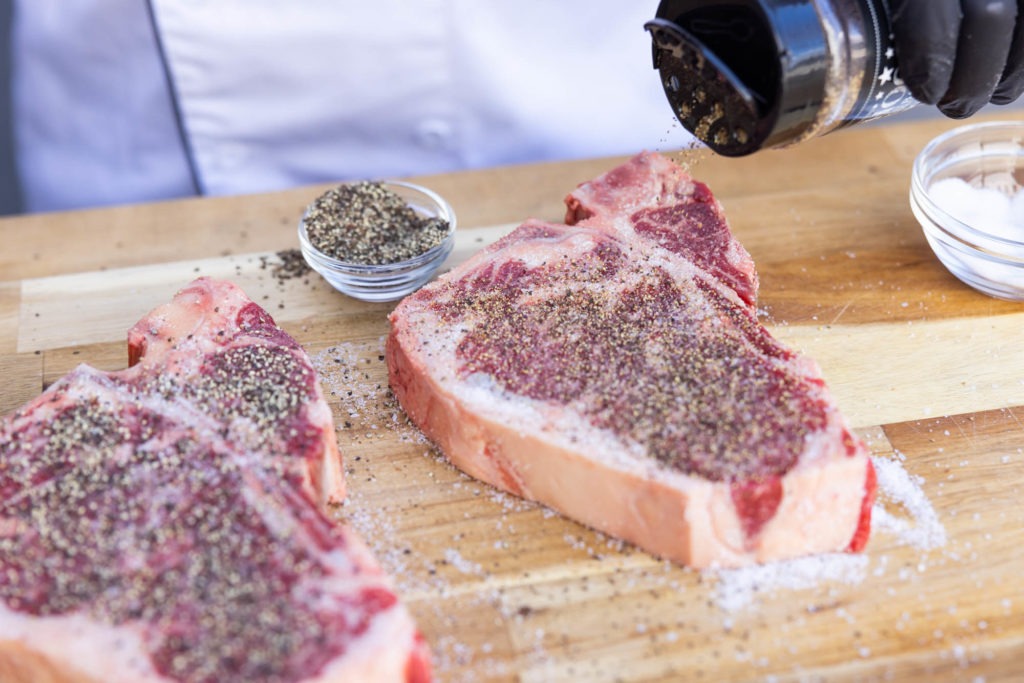
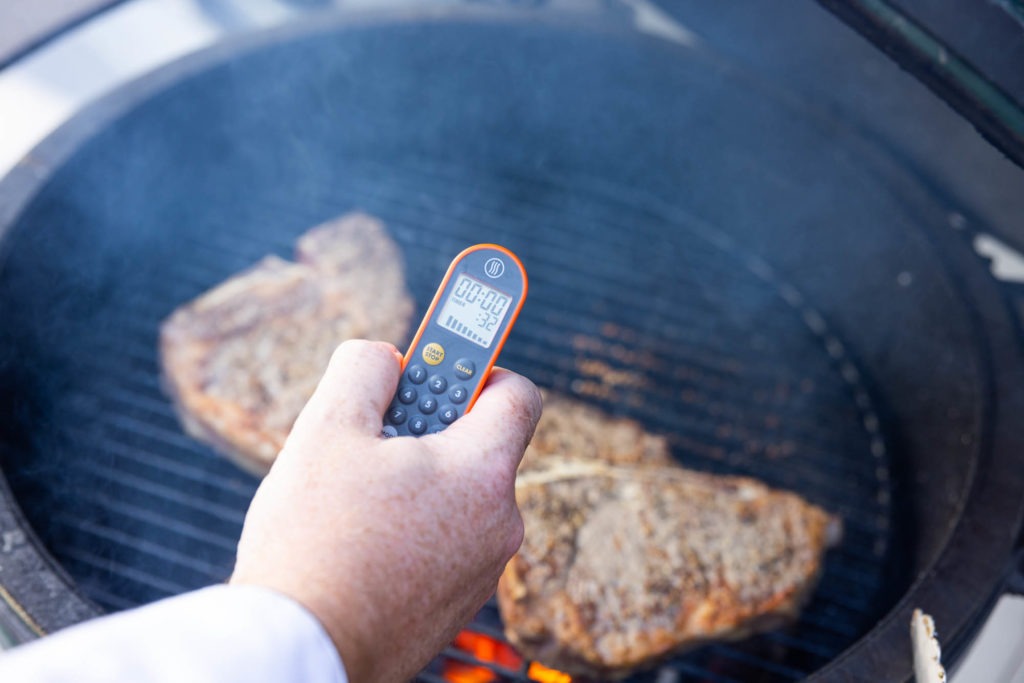
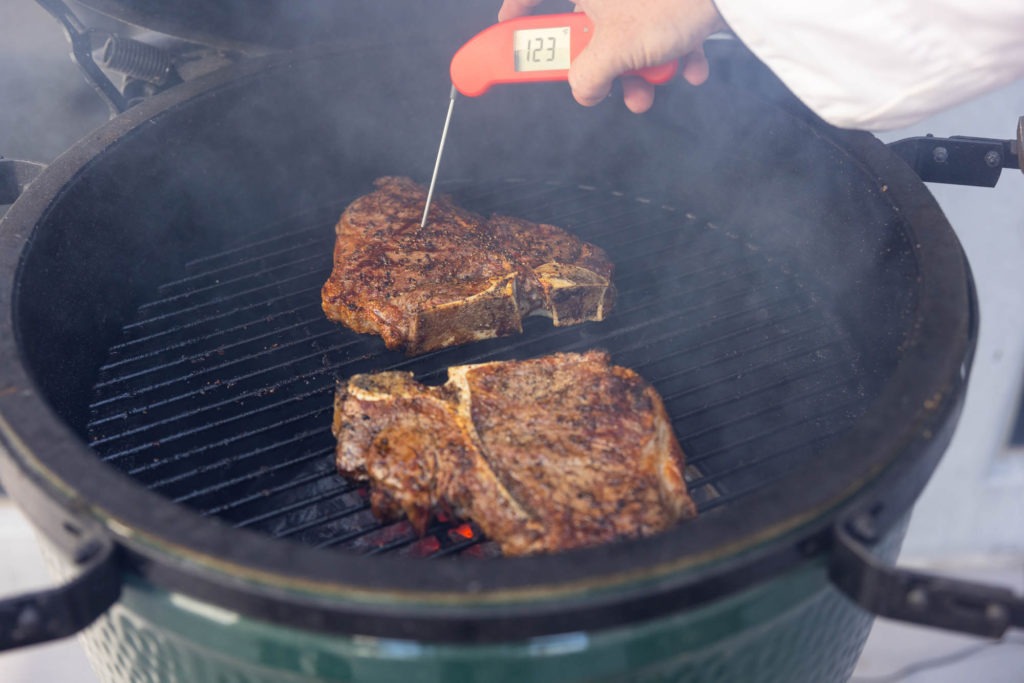
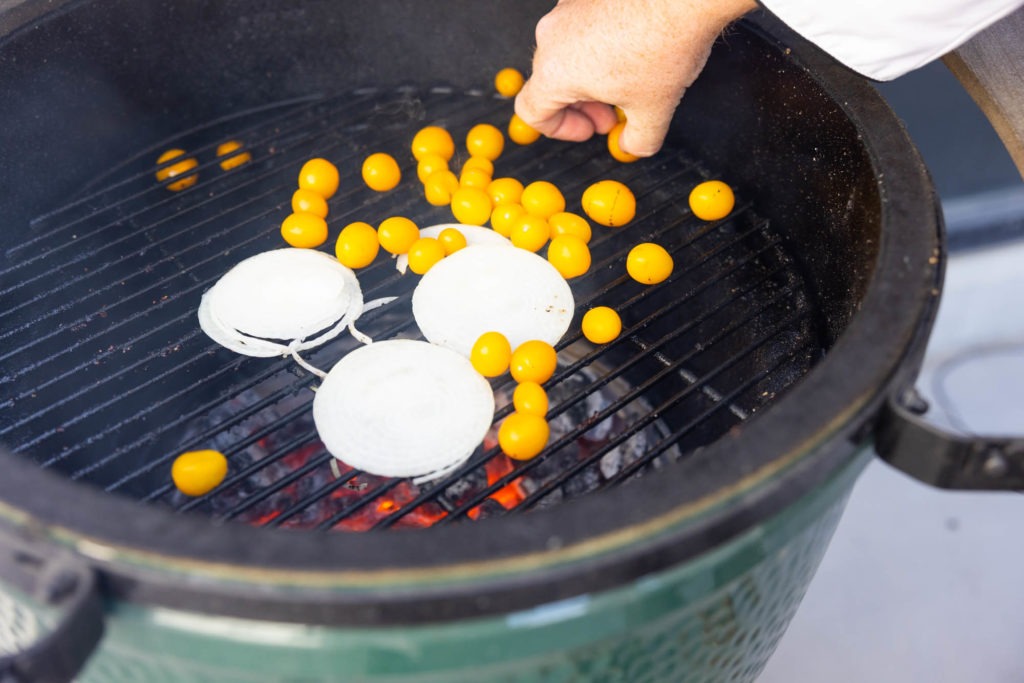
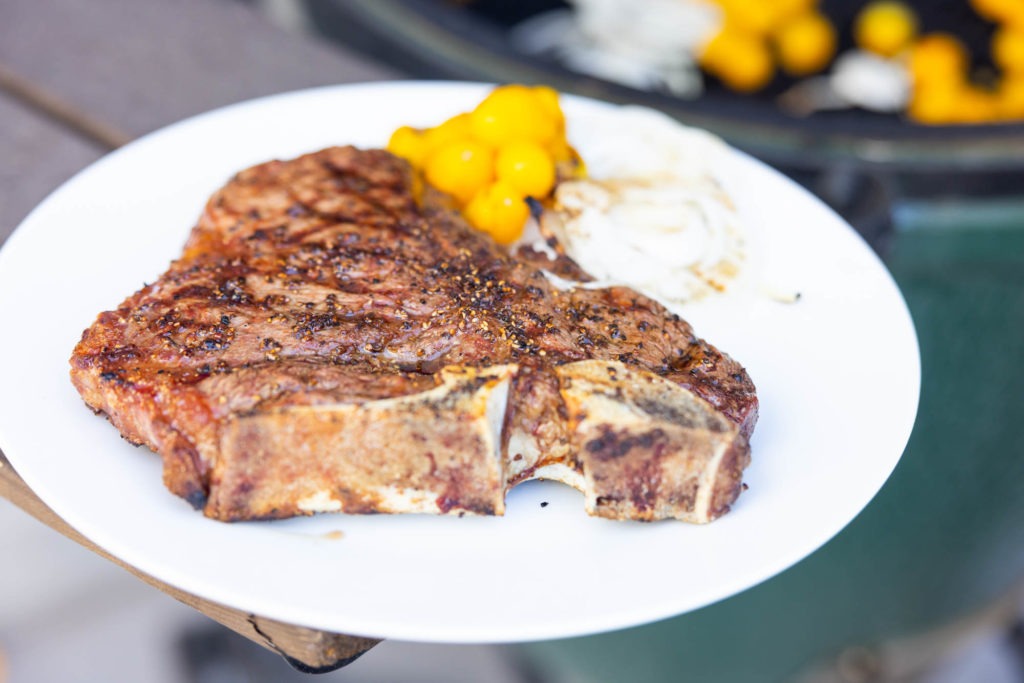

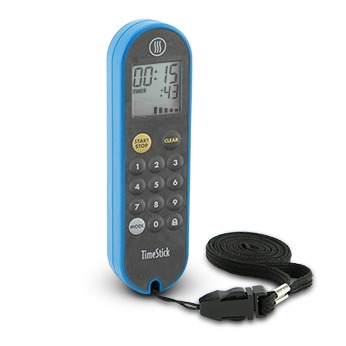
Thank you, Martin. Just checking – I’m presuming you had the Egg grate temp around 500F and, with a short interval between flips, just left the lid open for the whole cook?
Greg,
I think 500°F is a good estimate of where the grate temp was (I neglected to measure it), and yes we left the lid open for the entire cook.
I have several ThermoWorks products and have used several of your recipes. Thanks and keep up the good work.
Do I grill t-bone steak the same way on a Weber Gas Grill, or another way?
Gary,
YOu do it the same way. Have your grill up to medium-high or high, and just keep flipping!
When you buy your beef, it’s worth asking about porterhouse steaks. A porterhouse gives you a larger filet portion than a t-bone, yet sometimes they’re the same price per pound or only a tiny bit more.
You did not address the main issue with a t bone or porterhouse steak. The tenderloin piece will cook much quicker than the sirloin.
Robert,
No, I didn’t address it, but I guess I can here!
It is true that the problem for this combination strip/filet steak can be a difference in cook times. But I find that to be a greater problem for porterhouse than it is for T-bone. The reason is geometry. Porterhouse has a big filet hanging far away from the bone. It Can grab more heat and overcook more easily. With a T-bone, you only have a delicious little taste of filet, and most of it is nestled close to the bone, which acts as an insulator when cooking. When temping the steaks for this cook, I found a pretty wide temperature margin between the center of the strip steak and the edge of the strip steak close to the bone—easily 5°F. Since most of the filet is so close to the bone, it is protected by that insulation and doesn’t overcook as easily. We found our tenderloin piece to be a perfect medium-rare, just like I like it.
I DO worry about this problem with porterhouse though!
Can’t wait to try this. It goes against everything I have always done when cooking steaks.
I have a Thermo Pop, a DOT, and a Christopher Kimball Timer.
T-Bone is one of my favorites. They are especially good on a Big Green Egg.
I can’t wait to hear what you think of it!
Great article for a new techinique, but missing one MAJOR component.
What is the grill temp? 10 flips at 350 is not the same as 10 flips at 650+. Temp is more important than time; both cooking temp and internal food temp
Jeff,
That is a good point, but one I’m afraid I can’t address as well as I’d like. I should probably have put a little cast iron on the grill and temped it with my IR (a great way to tell grill temp), but neglected to do so. I’d imagine that distance from flame (coals) is a relatively good stand-in for grill temperature here. Charcoal does have some variability in how hot it burns, but could be said to sit within a certain range. Most grills will only allow so much charcoal under the grate—there is a space limitation, so we don’t need to worry about heat stacking. I’d say that our grill grate wat about 6–8″ above the surface of our coals. If your grill grate is closer, you’ll be pumping in more heat, if it’s further away, you’ll be pumping in less.
But in the end, none of that matters, in a way. Yes, if you have hotter grill you’ll need fewer flips, and correspondingly more flips for a colder gill, but the number of flips is, ultimately, irrelevant. The internal temperature is what matters! Temp your steak every few flips and you’ll be able to see how fast it’s heating up and when it is ready to pull. A thicker steak will take more flips, a thinner steak fewer.
Doesn’t temping the steak every few flips cause the juices to be released more often ?
Debby,
We did some serious experimentation to find out about that, and the answer is no! YOu can read about it in our post about how temping a steak doesn’t make it dry.